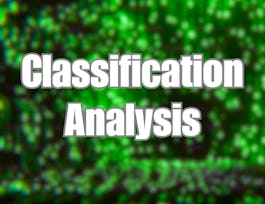Classification problems are one of the most common scenarios we face in data science. This course will help you understand and apply common algorithms to make predictions and drive decision-making in business. Whether you’re an aspiring data scientist, studying analytics, or have a focus on business intelligence, this course will give you a comprehensive overview of classification problems, solutions, and interpretations.



Classification - Fundamentals & Practical Applications
This course is part of Practical Data Science for Data Analysts Specialization
Instructor: CFI (Corporate Finance Institute)
Sponsored by RIA PAYMENT INSTITUTION
Skills you'll gain
- Statistical Machine Learning
- Predictive Analytics
- Classification And Regression Tree (CART)
- Data Science
- Applied Machine Learning
- Artificial Intelligence and Machine Learning (AI/ML)
- Statistical Modeling
- Performance Measurement
- Predictive Modeling
- Performance Management
- Machine Learning Software
- Performance Metric
- Machine Learning
- Artificial Intelligence
- Machine Learning Methods
- Scikit Learn (Machine Learning Library)
- Machine Learning Algorithms
- Supervised Learning
Details to know

Add to your LinkedIn profile
1 assignment
November 2024
See how employees at top companies are mastering in-demand skills

Build your subject-matter expertise
- Learn new concepts from industry experts
- Gain a foundational understanding of a subject or tool
- Develop job-relevant skills with hands-on projects
- Earn a shareable career certificate


Earn a career certificate
Add this credential to your LinkedIn profile, resume, or CV
Share it on social media and in your performance review

There are 7 modules in this course
Classification problems are one of the most common scenarios we face in data science. This course will help us understand and apply common algorithms to make predictions and drive decision-making in business. From Logistic Regression to KNN and SVM models, we'll learn how to implement techniques in Excel and Python and how to create loops to run models in parallel. Since model evaluation is so important, we’ll dedicate a whole chapter to interpreting model outputs with evaluation metrics and the confusion matrix. With this, we’ll learn about false negatives, and false positives, and consider the impacts these may have on specific business scenarios. Finally, we’ll have a brief insight into more advanced classification techniques such as feature importance, SHAP values, and PDP plots.
What's included
1 video1 reading
What's included
8 videos
What's included
9 videos1 reading
What's included
12 videos
What's included
19 videos
What's included
1 video
What's included
1 assignment
Instructor
Offered by
Why people choose Coursera for their career




Recommended if you're interested in Business

University of Washington

Corporate Finance Institute

University of Colorado Boulder

Open new doors with Coursera Plus
Unlimited access to 10,000+ world-class courses, hands-on projects, and job-ready certificate programs - all included in your subscription
Advance your career with an online degree
Earn a degree from world-class universities - 100% online
Join over 3,400 global companies that choose Coursera for Business
Upskill your employees to excel in the digital economy


